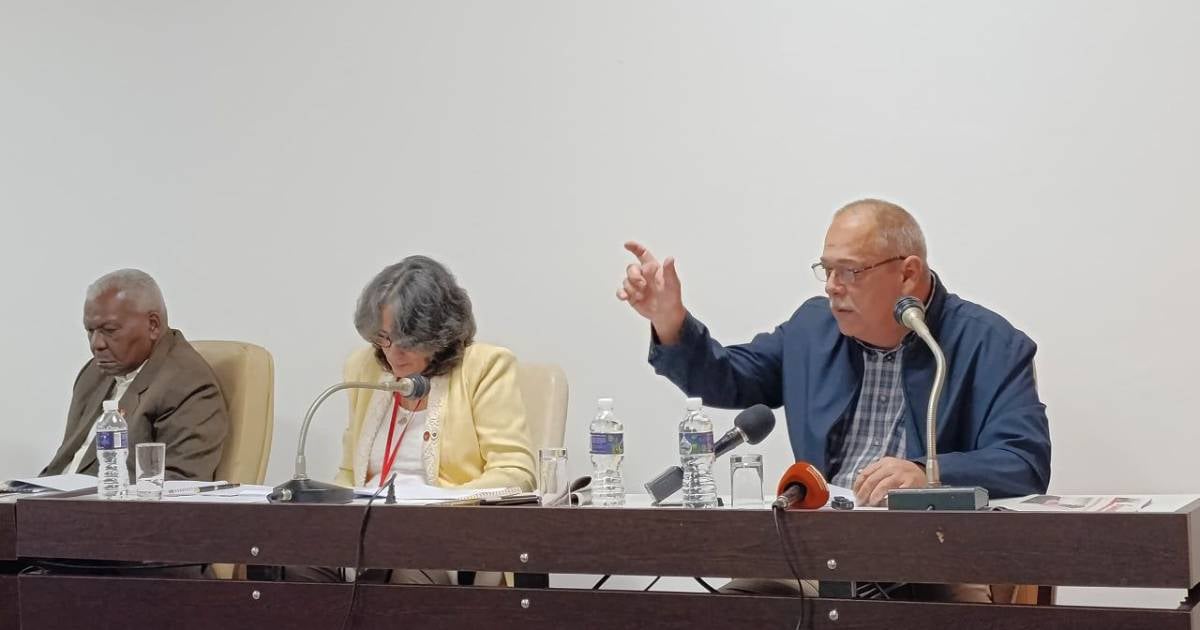On Monday, Cuba's Minister of Energy and Mines, Vicente de la O Levy, addressed the National Assembly deputies, asserting that a "feasible strategy" exists to restore the National Electric System (SEN). However, he admitted that blackouts will persist, continuing to disrupt the daily lives of Cubans. "We are moving towards independence from imported fossil fuels," De la O Levy stated during his presentation to the Parliament's Industry, Construction, and Energy Commission. Despite this, he acknowledged there will be no immediate solution to the power outages, though some "improvement" is anticipated.
De la O Levy shared data on the installation of solar parks, approximately five each month, along with enhancements in thermal and distributed generation. Nonetheless, he clarified that these efforts won't immediately eliminate blackouts. "We began July with an average of 18 hours of outages and last Friday, 11," he noted, with the aim of reducing blackouts to around four hours daily.
However, the situation on the ground paints a different picture. Cubans face entire days without electricity, water, or the ability to preserve food or use fans during the sweltering summer heat.
Challenges in Power Generation
Cubadebate, a state-run media outlet, reported De la O Levy's explanation regarding decreased mobile generation. "The country once had up to eight floating power plants, but five have been withdrawn. With limited financial resources, minimal payments have been made to keep the remaining plants operational through July and August," he explained.
The electrical generation crisis is compounded by a steady decline in domestic crude production, which dropped from 3.6 million to just 2.1 million tons. Although the negative trend has recently stabilized, the country only managed to accumulate 51,000 tons above the plan. Additionally, diesel and fuel oil imports have decreased, directly impacting electricity generation capacity.
Struggles with Infrastructure and Resources
In terms of natural gas generation, Energas currently operates with 8.3 GWh, insufficient to counterbalance the system's overall deterioration. A prominent example is the Felton 2 thermal power plant, which remains offline. The minister assured that recovery efforts are underway, albeit solely with national industry resources, potentially leading to more delays due to the lack of parts and technology.
The situation with power generators is equally grim. De la O Levy conceded that progress has stalled due to the inability to secure necessary financing, leaving many essential distributed generation units inactive.
Despite recurring rhetoric over recent months, the official explained that peak consumption has surged by 524 MW, driven by increased appliance imports, liquefied gas shortages, and electricity tariffs that, instead of encouraging savings, promote excessive consumption.
Renewable Energy and System Instability
Although advancements in renewable energy installation are reported, like the 481.3 MW now available in solar parks, they are still insufficient to alleviate the generation shortfall or ensure system stability. Moreover, the country lacks enough transformers, needing 12,000 annually, while thefts of electrical components, oil, and fuel exacerbate the crisis.
The Discrepancy Between Optimism and Reality
The minister's declarations contrast with his own and other government figures' statements just days earlier, during the Communist Party's 10th Central Committee Plenary, where they acknowledged the primary cause of the power collapse is the oil shortage. "If we had fuel and lubricant today, the situation would be entirely different," said Organization Secretary Roberto Morales Ojeda, supporting De la O Levy's confirmation that more than half of the blackouts, up to 1,000 MW of impact in a single day, are due to fuel shortages rather than technical failures.
Even the ruling leader Miguel Díaz-Canel was more forthright: "Here, when we face this electro-energy situation, almost everything comes to a halt. (...) In recent weeks, there have been provinces that have been without power almost all day."
This summer, the government has implemented a series of restrictive measures to ration electricity, deeply affecting the country's work and social life:
- State offices closed from Friday to Monday.
- Mandatory consumption reduction in public and private centers.
- Directed power cuts to private businesses that exceed their consumption plan.
- Time restrictions on the use of electrical equipment in carpentry and food centers.
In places like Manicaragua and Calixto García, these selective cuts are already in effect, posing a direct threat to the struggling non-state sector.
The contradiction between the minister's optimistic, technical message to the Assembly and prior warnings about the collapse and inability to pay for fuel highlights the disarray and improvisation with which the crisis is managed. The promise of "improvement" no longer consoles a population hearing different stories week after week, as fans stop working and the little food in refrigerators spoils.
FAQs on Cuba's Energy Crisis
What is the current strategy to address Cuba's blackouts?
The strategy includes installing solar parks, improving thermal and distributed generation, and moving towards independence from imported fossil fuels, though blackouts will continue for now.
Why are power outages still happening in Cuba?
The main reasons are the decline in domestic crude production, decreased imports of diesel and fuel oil, and increased energy consumption due to rising appliance imports and insufficient renewable energy capacity.
How is the Cuban government managing the energy crisis?
The government has implemented measures such as closing state offices on certain days, reducing power consumption in public and private sectors, and rationing electricity to manage the crisis.
